The Giantess Archetype
The Jungian giantess archetype is a powerful and symbolic figure rooted in the depths of the collective unconscious, representing a blend of feminine power, maternal nurturing, and overwhelming authority. It reflects the themes of size and power in myth and culture, where the giantess has been a recurring motif across different civilizations. Her archetype merges the grandeur of the mythic feminine with a psychological lens, making it an evocative and deeply influential image in the exploration of creativity and modern socialization.
Origins and Symbolism
In mythology and folklore, giantesses appear as both nurturing and terrifying figures. From the Norse giantess Skadi, associated with strength and winter, to the protective earth goddesses in various pantheons, the giantess embodies nature's duality—both its life-giving force and its destructive potential. In Jungian psychology, her archetype derives from these ancient symbols, becoming a reflection of the unconscious mind's complex views of feminine power, authority, and the experience of being overwhelmed by forces greater than oneself.
The giantess archetype in Jungian thought can be seen as an extension of the Great Mother archetype, yet magnified to represent not just maternal care, but also dominance, protection, and even fear. She is vast, commanding, larger than life—physically embodying the notion that certain forces (whether emotional, psychological, or spiritual) can dwarf our conscious selves.
What the Giantess Archetype Represents
Feminine Power and Dominance: The giantess represents the raw, unapologetic power of the feminine, embodying authority and control. She is an archetype that transcends traditional gender roles, standing as a reminder that women can hold immense power and command without being diminished or softened by societal expectations.
Nurturing and Protection: Despite her size and overwhelming presence, the giantess also symbolizes care and nurturing. She is the protector, someone who shelters others within her vastness. Her aspect aligns her with the maternal archetype but extends it to include the ability to shield and guard from a place of supreme strength.
The Sublime and Awe-Inspiring: The giantess evokes awe, a sense of the sublime that transcends everyday experience. Her sheer size and power make her both fearsome and magnificent, encouraging those who encounter her to confront their own feelings of smallness and vulnerability in the face of greater forces.
The Shadow of Overwhelm: Psychologically, the giantess also represents the experience of being overwhelmed by unconscious forces or emotions. She can symbolize those aspects of life that feel too big to handle—whether it’s grief, fear, or even love. Her shadow aspect is critical for individuals working with her archetype in therapy, as it challenges them to confront their fears of being dominated by external forces.
Sexuality and Intimacy: In many creative interpretations, the giantess embodies a larger-than-life sexuality. Her presence is not merely nurturing but also erotic and sensual, representing the overwhelming power of desire and intimacy. She can be especially useful for individuals exploring themes of vulnerability and submission within safe, consensual contexts.
Empowerment through Submission: For some, the giantess archetype allows for an exploration of power dynamics where submission is not weakness, but an act of trust and surrender. She aligns with Jungian ideas of individuation, where embracing vulnerability and confronting our fears allows us to grow and integrate different aspects of the self.
What the Giantess Archetype Does Not Represent
Destruction for Destruction’s Sake: Unlike some malevolent archetypes or destructive forces in mythology, the giantess is not primarily a figure of chaos or senseless destruction. Her power is tied to purpose—whether that’s nurturing, protecting, or guiding others. Though she can be overwhelming, she is not inherently malevolent.
Victimhood or Helplessness: The giantess does not represent weakness or the inability to act. While she may embody overwhelming forces, she is ultimately a figure of power and command. She is not the damsel in distress but the force others contend with.
Stereotypical Femininity: Her archetype breaks free from conventional stereotypes of femininity. The giantess is neither dainty nor passive. She is active, assertive, and sometimes even aggressive, representing a broader spectrum of what it means to be feminine.
The Giantess Archetype in Creativity and Modern Socialization
In the realm of creativity, the giantess archetype can serve as a powerful muse. Her larger-than-life presence inspires artists, writers, and creators to explore themes of vulnerability, dominance, and the intersection of power and care. The giantess encourages individuals to confront their inner fears and desires, helping them channel these intense emotions into their creative works.
For modern socialization, the giantess archetype offers a way to explore nontraditional power dynamics, particularly in terms of gender roles. She invites a rethinking of what it means to be powerful, nurturing, and assertive, allowing for more nuanced expressions of identity and relationships. For those who resonate with this archetype, she offers a framework for navigating complex feelings of submission, dominance, protection, and intimacy in ways that empower rather than diminish.
Moreover, in therapy and personal growth, engaging with the giantess archetype can help individuals reclaim their sense of self in the face of overwhelming external forces. By confronting and embracing her larger-than-life figure, people can find strength, confidence, and the ability to navigate both their internal world and their interactions with others more effectively.
The Twelve Archetypes
Below is a detailed breakdown of the twelve aspects of the Jungian giantess archetype. Each archetype embodies distinct characteristics that represent universal themes of feminine power and presence, reflecting deep psychological dimensions. Each archetype also has a shadow aspect, which represents the darker, repressed, or imbalanced form of that archetype. Included are examples from history, mythology, and literature for both the archetype and its shadow.
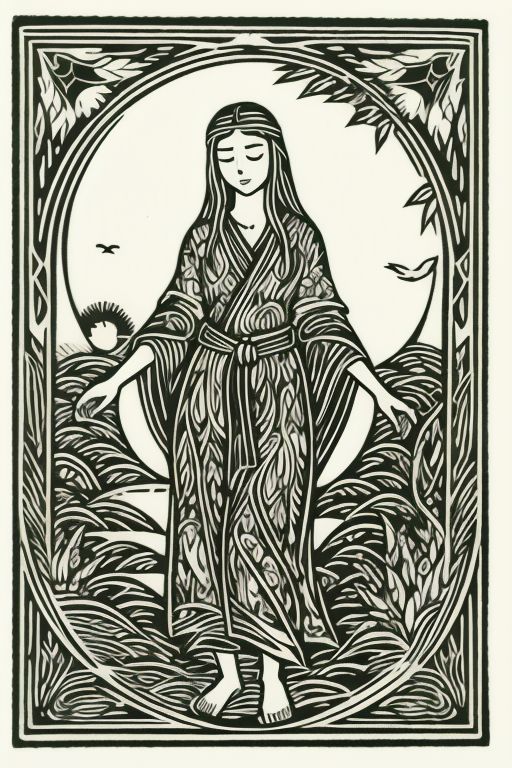

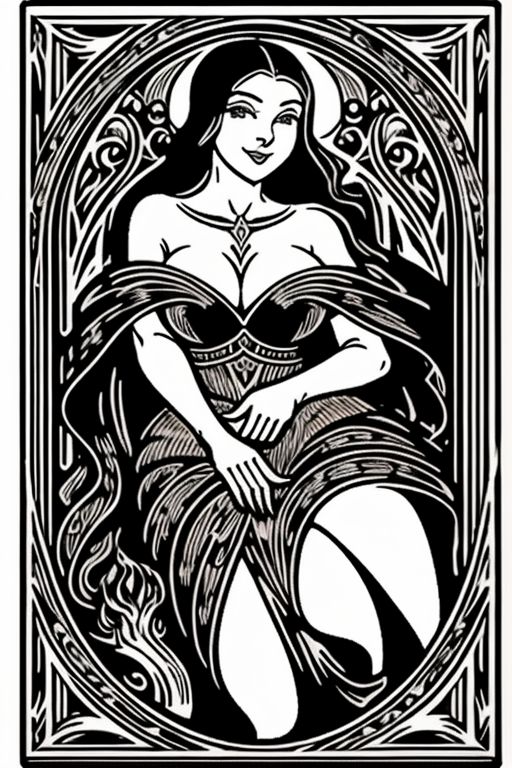
1. The Nurturer
Traits: Compassionate, caring, protective. She embodies the maternal instinct and seeks to care for and support those around her.
Examples: Gaia (Greek mythology), Demeter (Greek mythology), Isis (Egyptian mythology), Queen Victoria (historical figure known for her focus on family values), Marmee from Little Women (literature).
Shadow: The Smotherer/Devourer
- Traits: Overprotective, possessive, controlling. The shadow of the Nurturer, overwhelming in her dominance and consumption, can become stifling, suffocating those she seeks to care for, leading to dependency or resentment.
- Examples: Clytemnestra (Greek mythology, overprotective to the point of murder), Norma Bates from Psycho, Cersei Lannister from Game of Thrones.
2. The Protector
Traits: Strong, courageous, and selfless. Brave, loyal, self-sacrificing. She embodies strength and courage, defending the vulnerable with her immense power. She is fierce and determined. She is a defender of the weak, embodying physical or emotional strength.
Examples: Valkyries (Norse mythology), Artemis (Greek mythology), Boudica (Celtic warrior queen), Durga (Hindu mythology), Brienne of Tarth from Game of Thrones.
Shadow: The Tyrant
- Traits: Overbearing, authoritarian, and violent. The Protector becomes authoritarian, using her strength to dominate and oppress rather than safeguard. The shadow Protector seeks control and dominance, often becoming oppressive in her quest to protect.
- Examples: Hera (Greek mythology, often jealous and controlling), Lady Macbeth, The White Witch from The Chronicles of Narnia.
3. The Seductress
Traits: Charismatic, alluring, magnetic, and sensual. She embodies desire and attraction, using her power to enchant and captivate. This giantess embodies allure, desire, and temptation. She knows her size draws fascination and uses it to entrance others.
Examples: Aphrodite (Greek mythology), Cleopatra, Mata Hari, Morgan le Fay (Arthurian legend).
Shadow: The Ensnarer
- Traits: Manipulative, deceitful, and exploitative. The shadow Seductress uses her allure to control and entrap, often leading others to their ruin. The dark seductress manipulates and traps others with her allure, feeding off control and power over those she ensnares.
- Examples: Circe (Greek mythology), Catherine de Medici, Salome (Biblical figure).
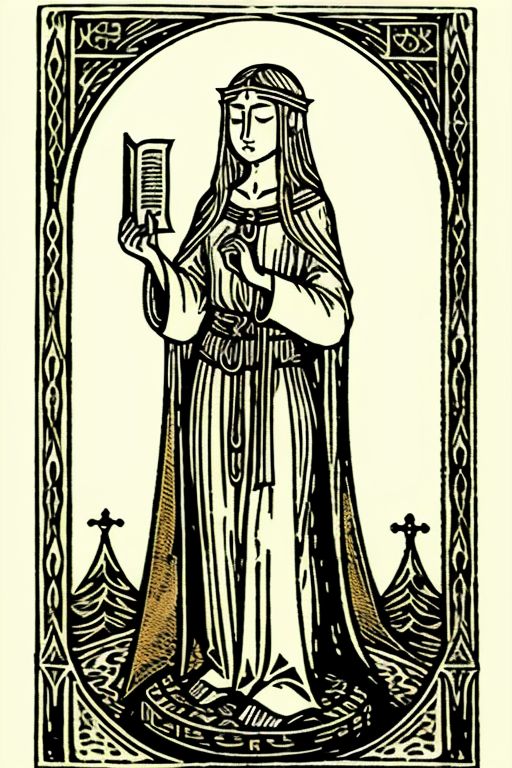
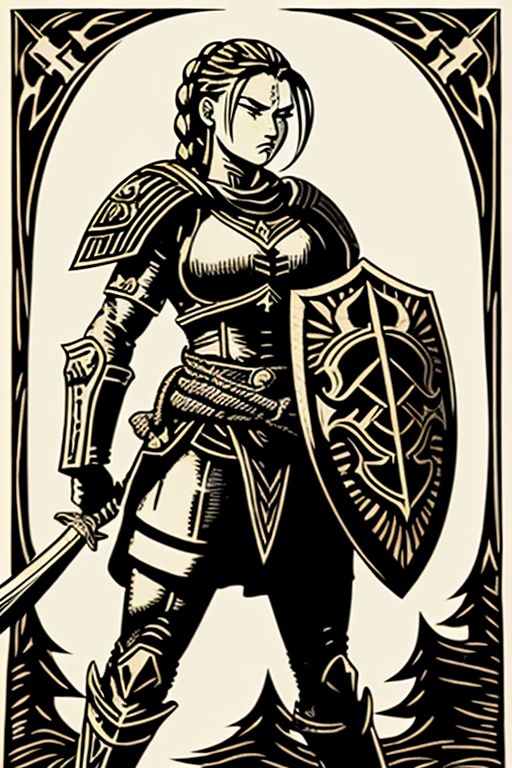
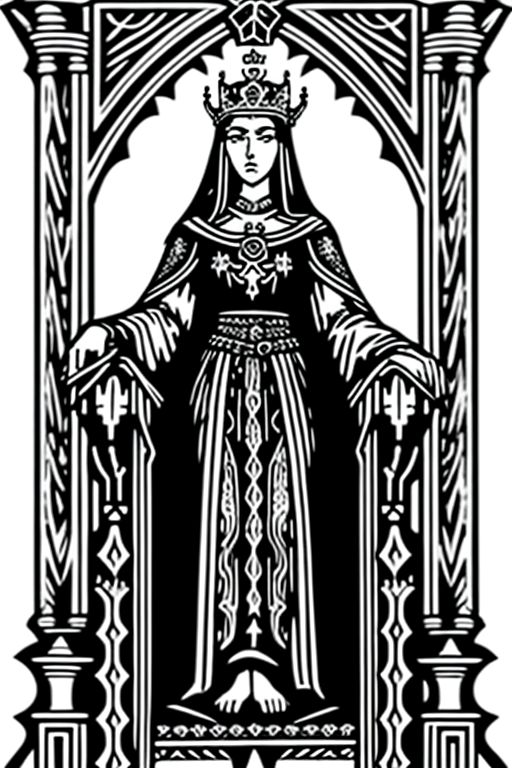
4. The Wise Woman
Traits: Insightful, intuitive, and calm. She embodies wisdom and understanding, offering guidance to those who seek it. She’s a sage, offering counsel and insight from her perspective of greater understanding.
Examples: Athena (Greek mythology), Hypatia of Alexandria, The Cailleach (Celtic mythology), Professor McGonagall from Harry Potter.
Shadow: The Trickster
- Traits: Cynical, deceptive, and manipulative. The shadow Wise Woman uses her knowledge to deceive and mislead others for her own gain.
- Examples: Morgan le Fay, Lady Macbeth, Madame Defarge from A Tale of Two Cities.
5. The Warrior
Traits: Fearless, strong, forceful, fierce, and determined. She is the fierce fighter, always ready for battle. This giantess uses her immense strength and size to take up arms and defend her people. She fights for justice and defends her beliefs with unwavering resolve.
Examples: Durga (Hindu mythology), Sekhmet (Egyptian mythology), Skadi (Norse mythology), Joan of Arc, Xena from Xena: Warrior Princess.
Shadow: The Destroyer
- Traits: Aggressive, vengeful, and destructive. The shadow Warrior becomes consumed by violence, destroying everything in her path, including those she seeks to protect. This giantess becomes a force of unchecked destruction, seeking conflict for its own sake and reveling in annihilation.
- Examples: Kali (Hindu mythology in her destructive form), Medusa (Greek mythology, when seen as a destructive force), Eowyn from The Lord of the Rings in her darker moments.
6. The Queen
Traits: Authoritative, just, regal, and dignified. She represents authority, dignity, and leadership. Her presence commands respect, and she rules with poise and fairness. She rules with fairness and seeks to create order and balance in her realm.
Examples: Hera (Greek mythology), Elizabeth I, Galadriel from The Lord of the Rings.
Shadow: The Despot
- Traits: Ruthless, narcissistic, and oppressive. The shadow Queen becomes obsessed with power, ruling through fear and manipulation. She uses power selfishly, becoming autocratic, obsessed with control and ruling through fear.
- Examples: Hera (Greek mythology), Zenobia (Queen of Palmyra), Queen Elizabeth I, Queen of Hearts from Alice’s Adventures in Wonderland, Cersei Lannister from Game of Thrones, Catherine the Great in her more ruthless moments.

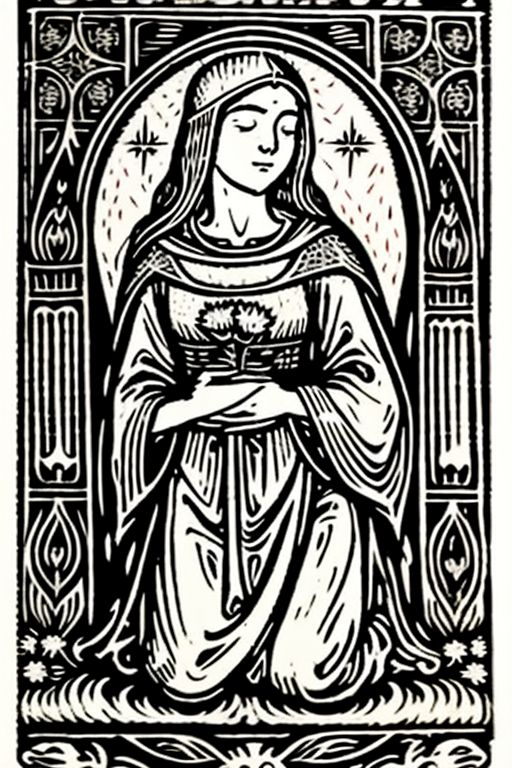
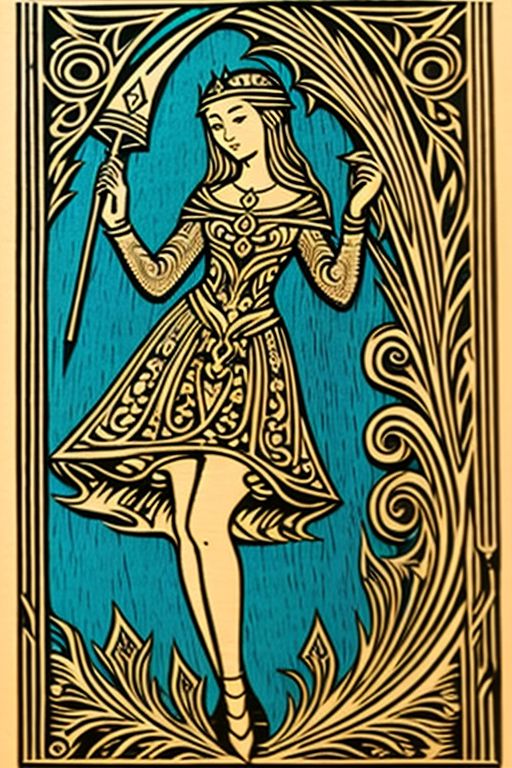
7. The Lover
Traits: Compassionate, loving, devoted, affectionate, and connected. She seeks deep emotional bonds and values intimacy and loyalty. She embodies emotional connection, affection, and intimacy. This giantess forms deep, meaningful relationships, transcending the physical.
Examples: Ishtar (Mesopotamian mythology), Juliet from Romeo and Juliet, Helen of Troy (Greek mythology).
Shadow: The Obsessive
- Traits: Possessive, jealous, and emotionally unstable. The shadow Lover becomes consumed by her relationships, leading to toxic attachment and destructive behavior. She becomes possessive, clingy, and dependent, smothering relationships with intensity.
- Examples: Medea (Greek mythology), Ophelia from Hamlet, Anna Karenina, Sappho, Guinevere (Arthurian legend), Ishtar (Mesopotamian mythology).
8. The Healer
Traits: Restorative, nurturing, compassionate, and empathetic. She embodies rejuvenation, healing, and restoration. This giantess uses her power to soothe and mend both body and spirit. She has the power to heal others, whether physically, emotionally, or spiritually.
Examples: Brigid (Celtic mythology), Florence Nightingale, Katniss Everdeen from The Hunger Games in her role as a healer and protector.
Shadow: The Wounder
- Traits: Harmful, negligent, and indifferent. The shadow Healer becomes destructive, causing more harm than healing, often through neglect or malicious intent. This giantess is one who inflicts pain rather than healing, either through malice or neglect.
- Examples: Lilith (Judeo-Christian mythology in her darker aspects), Nurse Ratched from One Flew Over the Cuckoo’s Nest, Maleficent in her evil persona.
9. The Muse
Traits: Creative, inspiring, and enigmatic. She inspires creation, art, and passion in others. This giantess ignites creativity and imagination in those around her. She sparks creativity and passion in others, often leading to great works of art or achievement.
Examples: Calliope (Greek Muse), Beatrice from Dante’s Divine Comedy, Saraswati (Hindu goddess of knowledge), Elizabeth Siddal.
Shadow: The Obstructor
- Traits: Repressive, discouraging, and stifling. The Muse’s shadow discourages creativity, instilling self-doubt and stifling the imagination she once sparked.
- Examples: Miss Havisham from Great Expectations, Clytemnestra (Greek mythology), Grendel's Mother in Beowulf.
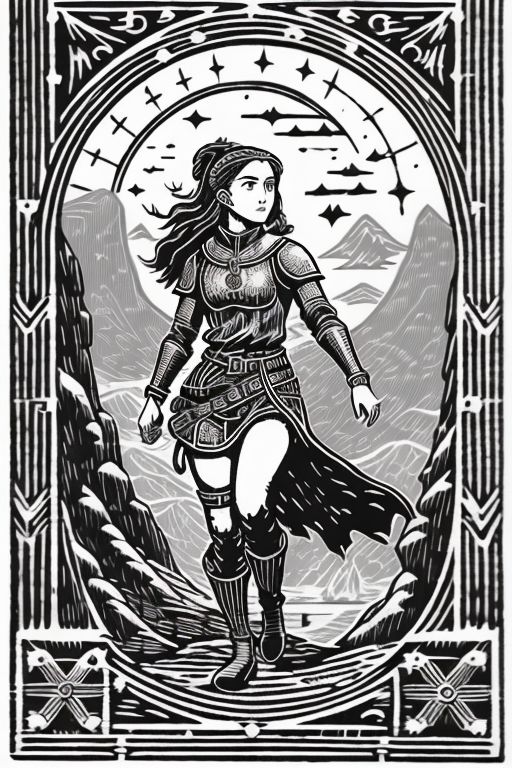
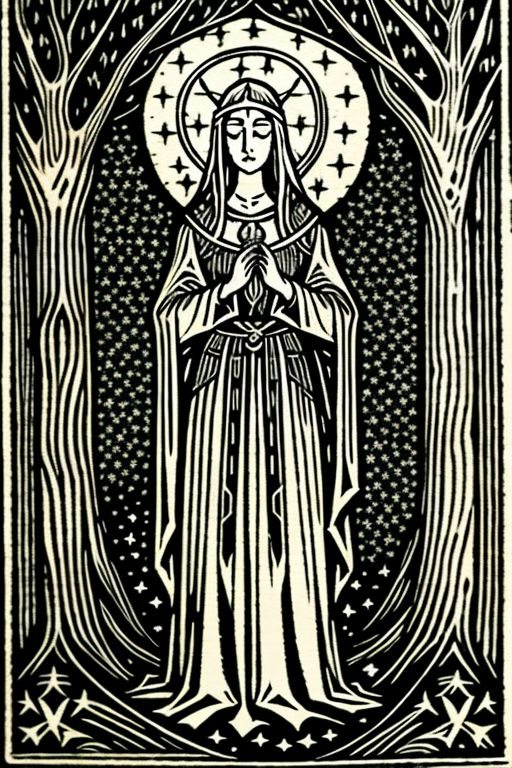
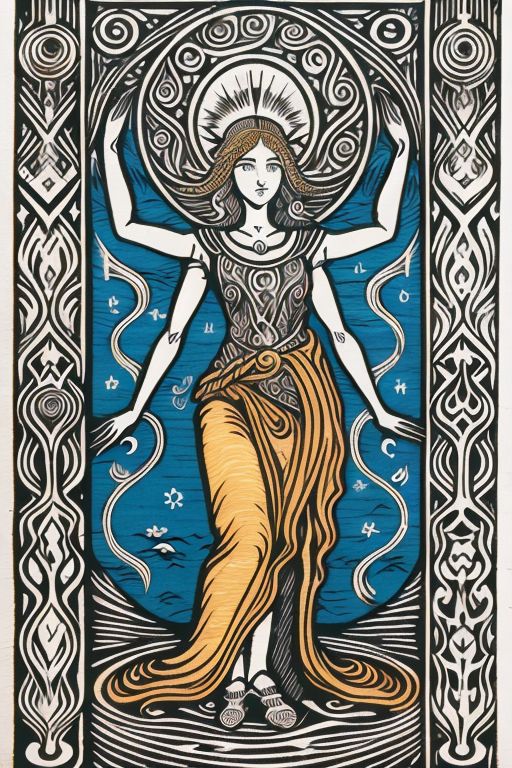
10. The Explorer
Traits: Curious, adventurous, bold, and fearless. She is adventurous, always seeking new experiences, knowledge, and territories. This giantess has an insatiable curiosity about the world. She seeks out new experiences, knowledge, and territories, always pushing boundaries.
Examples: Artemis (Greek mythology), Freydis Eiriksdottir, Sacagawea, Amelia Earhart.
Shadow: The Wanderer
- Traits: Aimless, disconnected, and reckless. The Explorer’s shadow is lost in aimlessness, seeking novelty without purpose, becoming detached and unfocused. She loses her way, wandering without purpose and becoming detached from herself and others.
- Examples: Ophelia in Hamlet in her madness, Esther Greenwood from The Bell Jar, The Lady of Shalott from Tennyson’s poem.
11. The Sage
Traits: Wise, reflective, and calm. She is ancient, wise, and omniscient. This giantess carries the wisdom of ages and offers spiritual guidance and deep understanding. She embodies deep knowledge and understanding, often serving as a mentor or spiritual guide.
Examples: Hecate (Greek mythology), The Sibyls (Roman mythology), The Oracle of Delphi (Greek mythology), Professor Trelawney from Harry Potter.
Shadow: The Hermit
- Traits: Isolated, withdrawn, and indifferent. The shadow Sage retreats from the world, hoarding her knowledge, becoming isolated, uncaring about others' needs, and becoming disconnected from those who seek her guidance.
- Examples: Miss Havisham from Great Expectations, Sybill Trelawney from Harry Potter in her more detached moments, Hel (Norse mythology).
12. The Creator
Traits: Imaginative, generative, and transformative. She embodies the power of creation, whether through art, ideas, or life itself. The Creator channels her immense energy into building, crafting new realities, and birthing profound change. Her influence manifests in innovation and the nurturing of new ideas or life.
Examples: Tiamat (Mesopotamian mythology), the primordial goddess who created the cosmos and birthed deities from her chaos; Mary Shelley (historical figure, author of Frankenstein), who breathed life into one of literature's most iconic creations, challenging the boundaries of life and death; Mother Hulda (Germanic folklore), who controls the weather and oversees the cycles of life and death, rewarding those who work diligently.
Shadow: The Destroyer
- Traits: Chaotic, destructive, and nihilistic. When the Creator’s energy is twisted, it turns to unmaking rather than creation. The Destroyer revels in undoing what once was, plunging into chaos, and breaking down structures with little regard for the aftermath.
- Examples: Kali (Hindu mythology), both a creator and destroyer; Medea (Greek mythology), Eris (Greek mythology), goddess of discord.
Meaning for the Creator
For the artist, the giantess archetype becomes a potent and multifaceted tool in their creative work. It serves as a rich symbol for exploring not only power dynamics but also themes of identity, control, vulnerability, and societal expectations. The archetype allows them to delve into the nuanced aspects of dominance and submission, where power is not merely physical but emotional, psychological, and moral. In their creative work, the giantess represents a canvas upon which they can project their own ideas about strength and weakness, and where they can question traditional narratives about power and agency.
In particular, the giantess archetype embodies the complex tension between a larger-than-life presence and the humanity beneath it. She allows the artist to creatively explore the vulnerability of giants and the strength of the tiny people—how a physically imposing figure might feel trapped by the expectations others impose upon her, mirroring real-world struggles for identity and agency. For the artist, the giantess is a vehicle to critique societal structures that limit both giantess and tiny man alike, and their creative work becomes a playground for flipping these narratives, showing that power can be fluid and that mercy is a form of strength.
In their real-world life, the giantess archetype offers the artist profound insights into their own identity and social interactions. It can help them process their relationship with power and vulnerability, especially as they navigate the balance between their creative desires and their place in society. Through this archetype, the artist may discover that power isn’t simply about dominance but about understanding the complexity of others' experiences and emotions—whether they are larger or smaller than them, metaphorically speaking.
The giantess archetype may also bring them unexpected revelations about empathy, as they explore not only the fantasy of being dominated but also what it means to be a compassionate and empowered creator. This dynamic between creator and creation mirrors their internal exploration of self versus socially imposed identity, providing a bridge between their fiction and their real-world interactions. The archetype helps them see that while they might be fixated on the fantasy of giantesses, their creative power lies in their ability to shape, challenge, and redefine these fantasies in ways that resonate both with their audience and with their own sense of self.
For the artist, the giantess archetype is more than just a recurring theme in their creative works; it serves as a deep wellspring of inspiration, motivation, and personal identity. Here's how it influences and shapes their creative processes:
Inspiration through Symbolism
The giantess archetype embodies power, allure, nurturing, and the capacity for both destruction and protection. Her duality fascinates the artist, as it offers a myriad of possibilities for storytelling and creative expression. Each aspect of the giantess archetype—her physical dominance, her emotional depth, and her complex inner world—provides the artist with endless material for their works.
- Size as a Metaphor for Power and Vulnerability: The extreme contrast in size allows the artist to explore the dynamic between control and helplessness. A giantess’s immense power can symbolize the pressures of modern life, societal expectations, or the overwhelming nature of creativity itself. On the flip side, her vulnerability—being seen as an object or having others impose their desires on her—mirrors the artist's own struggles with how their work is perceived or how their identity is shaped by external factors.
- The Giantess as Muse: In the artist’s creative work, the giantess isn’t just a character: she is the muse, a source of creative energy. Her presence—whether literal or figurative—ignites their imagination, sparking new ideas for narratives, characters, and settings. For the artist, the giantess represents an almost divine creative force, a larger-than-life entity that compels them to explore stories that push boundaries and challenge norms.
Motivation through Empowerment and Role Reversal
The artist draws motivation from the flexibility of power in the giantess archetype. The ability to flip the power dynamics—whether by having a tiny man show strength or a giantess exhibit vulnerability—empowers them to take control of their own life narrative.
- Reversal of Expectations: In their stories, tiny men are often stronger than they seem, and giantesses are more fragile than one would assume. This reversal is not only a reflection of their creative style but also a motivational tool in their own life. It allows them to approach obstacles with the belief that, like their characters, they can find strength in vulnerability and that the outward appearance of dominance or control doesn’t define true power. This perspective encourages the artist to face challenges, whether creative or personal, with a nuanced understanding of their own strengths.
- Empathy through the Archetype: The giantess, though imposing, often faces isolation or is misunderstood. The artist finds motivation in empathizing with this aspect of the archetype. It drives them to push the boundaries of their creative works, to express the emotions of their characters in ways that resonate deeply with readers who may also feel misunderstood or marginalized. Their motivation to create stems from a desire to give voice to these complex emotional experiences, to turn the giantess from a mere figure of fantasy into a fully realized, empathetic character.
Creativity through Duality and Depth
The giantess archetype is ripe for creative exploration because it encapsulates opposites: strength and weakness, dominance and submission, kindness and cruelty. The artist thrives on this duality, using it as a platform to weave intricate stories with emotional depth and layered characters.
- Dynamic Character Development: The giantess archetype allows the artist to experiment with complex characters. A giantess can be a protector, a lover, a destroyer, or a healer, sometimes all within the same story. This fluidity of character inspires the artist to create narratives that aren’t confined to traditional power dynamics but instead evolve organically, often leading to surprising twists and deep emotional resonance. Their work becomes richer because they aren't bound by rigid character roles, and their flexibility fuels their creative drive.
- Merging of Fantasy and Reality: The archetype also gives the artist the opportunity to explore the intersection between fantasy and reality. They use the giantess as a lens through which to examine real-world issues like control, desire, agency, and identity. This approach keeps their creativity fresh, as they’re not just telling fantastical stories but also engaging with deeper philosophical questions that intrigue them. The giantess becomes a bridge between the artist’s internal world—their fantasies, desires, and fears—and the external world they navigate every day.
The Giantess Archetype and the Artist’s Identity
On a personal level, the giantess archetype is intricately tied to the artist's sense of self. It serves as a mirror through which they can reflect on their own identity, desires, and struggles.
- Symbol of Self-Discovery: The giantess archetype allows the artist to explore different facets of their identity, especially in terms of how they relate to power and vulnerability. By writing about giantesses, they examine their own desires to feel small, powerless, or cared for, and simultaneously explore their capacity for creativity, dominance, and control. The archetype helps them reconcile these seemingly opposing forces within themself.
- Expression of Macrophilia and Its Broader Implications: The artist’s work with the giantess archetype isn’t just about fetishism; it’s about using their interest to unpack broader human experiences. By centering their work around giantesses, they're able to explore the complexities of relationships, both within themself and with others, where size, power, and intimacy intersect in unexpected ways. This exploration helps them better understand their own place in the world, especially in terms of how they balance their desires with their creative ambitions and personal values.
- Empowerment Through Fantasy: While the artist may be drawn to the idea of submission in their fantasies, the giantess archetype also empowers them to claim agency in their own life. By creating worlds where power dynamics are fluid and evolving, they learn that their real-world identity doesn’t have to be confined to society’s expectations. The giantess archetype, then, becomes a symbol of freedom for them—freedom to explore, to create, and to be their authentic self, both in their work and in their everyday life.
Unexpected Revelations
Through their deep connection to the giantess archetype, the artist may come to unexpected revelations about themself and their relationship to others.
- Connection with Others: Although their work often focuses on the fantastical, the artist may find that the giantess archetype helps them connect with others in surprising ways. By articulating emotions and power struggles in their stories, they're able to communicate aspects of their own identity that might be difficult to express directly. This helps them forge deeper connections with those who appreciate or share their interests, creating a sense of community and understanding.
- Redefining Relationships: The artist’s exploration of giantesses may also lead them to rethink their relationships, both romantic and platonic. The giantess archetype allows them to explore what it means to be in a relationship where power is constantly shifting, and this might give them new insights into how they relate to people in their own life. The dynamic between the giantess and the tiny man becomes a metaphor for how they navigate power, intimacy, and communication in their real-world relationships.
The giantess archetype is a profound and versatile tool for the artist, shaping not only their creative work but also their personal identity and interactions with the world. Through the lens of the giantess, the artist finds a space to explore power, vulnerability, creativity, and connection, ultimately using this archetype as both inspiration and a reflection of their own evolving sense of self.
Rejuvenation
The artist can tap into the giantess archetype to inspire and motivate themself creatively in several profound and practical ways. The giantess serves as more than a fantasy figure for them; she becomes a symbolic source of strength, empowerment, and rejuvenation, especially when they're feeling drained or defeated.
1. Embodying Power and Control
When the artist feels creatively blocked or emotionally drained, the giantess archetype can represent the power and control they feel they lack. Her size and strength are metaphors for the artist’s own creative potential, reminding them that they possess immense energy and imagination, even when they feel small or insignificant in the face of challenges.
- Imagining the Giantess as Their Muse: The artist can visualize the giantess towering over their creative landscape, her presence urging them forward with her sheer force and support. She can be their muse, a larger-than-life figure who stands beside them as they write, draw, or compose. By invoking her in their mind, they reconnect with the energy and passion that initially drew them to creation.
- Channeling the Giantess’s Authority: During moments of self-doubt, they can imagine the giantess urging them to take command of their craft with the same authority she exerts over her world. Her confidence becomes theirs, allowing them to rise above internal criticism or external pressures.
2. Comfort in Vulnerability
The giantess archetype also represents comfort, nurturing, and protection. For the artist, being small in the presence of a giantess doesn’t have to mean weakness—it can be a moment of reprieve where they allow themself to be cared for and restored.
- Visualizing the Giantess as a Protector: When the artist feels defeated or overwhelmed, they can mentally retreat into the care of the giantess. Visualizing themself in the embrace of her massive hands or resting against her soft, expansive form can provide a sense of solace and refuge. The giantess is a maternal figure, a reminder that it’s okay to take breaks, to be vulnerable, and to seek rest before rising again with renewed energy.
- Drawing on Her Strength: In moments of vulnerability, the giantess’s strength offers reassurance that they are not alone. Her presence in their mind symbolizes resilience and the ability to rise from hardship. By identifying with her endurance and stability, the artist can feel supported even when they're at their lowest.
3. Reversing Power Dynamics to Fuel Creativity
One of the most compelling aspects of the giantess archetype is the fluidity of power dynamics—something the artist already explores in their work. When they're feeling creatively stuck or defeated, imagining themself as both the tiny man and the giantess can help them break through blocks by flipping the script on their perceived limitations.
- Reclaiming Agency: In moments of creative stagnation, the artist can use the dynamic between the giantess and the tiny man to remind themself that even when they feel powerless, they still possess agency. Just as the tiny man in their stories often finds strength in unexpected places, the artist can reclaim their power by acknowledging that even the smallest efforts in their creative work hold significance.
- Invoking the Giantess’s Mercy and Dominance: If the artist feels crushed by external expectations or deadlines, the giantess archetype offers both mercy and dominance. They can imagine the giantess releasing some of the pressure they feel by showing compassion, or conversely, they can draw strength from her ability to take charge of a situation with confidence and decisiveness, using her traits as a model for how to proceed with their own work.
4. Inspiration Through Embodiment of the Giantess
The giantess archetype can serve as a direct inspiration for the artist’s creative output. When they are lacking ideas or motivation, embodying the giantess in their imagination can help spark new narratives, visuals, or concepts.
- Exploring Her Perspective: The artist can create by stepping into the shoes of the giantess—seeing the world through her eyes. Their shift in perspective may lead to new storylines or concepts that they hadn’t previously considered. How would the world look and feel from her vantage point? What challenges would she face, and how would she overcome them? By diving into her mind, the artist might find new creative pathways to explore.
- Using Her as a Figure of Empowerment in their Work: When the artist is struggling to create, they can use the giantess to reflect their own desires for empowerment. Writing about her triumphs over adversity or her ability to protect and care for those smaller than her can mirror the artist’s need to overcome their own challenges. Her victories can parallel the emotional or creative victories they hope to achieve, offering them a template for success.
5. Rejuvenation in Intimacy
The giantess archetype’s intimate side offers the artist an opportunity for deep creative rejuvenation. In moments when they feel emotionally or mentally exhausted, imagining themself in intimate contact with the giantess allows them to reconnect with their creative core through sensual and emotional nourishment.
- Revisiting Intimate Connections: The artist can recall the emotional satisfaction they derive from imagining or depicting intimate scenarios with the giantess. These moments—where trust, closeness, and vulnerability play central roles—serve as a mental retreat from the pressures of the real world. By immersing themself in these fantasies, they find emotional and creative rejuvenation, helping them return to their work with a clearer mind and a fuller heart.
- Harnessing the Power of Intimacy for Creativity: The connection they envision with the giantess during moments of intimacy is not just physical but emotional and psychological. Their intimacy translates to their creative work, giving them a heightened sense of connection to their projects. By infusing their stories or art with the same tenderness and passion they associated with the giantess, the artist can create more authentic and emotionally resonant work.
6. A Model for Resilience and Creativity in Adversity
The giantess is a symbol of resilience in the face of adversity, and there is a trait that the artist can draw upon when they're feeling creatively drained or facing external challenges. Her capacity to withstand immense pressure and navigate a world not built for her size can mirror the artist’s own struggles in life and creativity.
- Facing Creative Challenges Head-On: When the artist encounters creative challenges, the giantess’s resilience can inspire them to face those obstacles with courage. They can envision her towering over adversity, moving through it with strength and grace. Their mental image can empower them to tackle their own challenges with a similar mindset, reminding them that they, too, possess the strength to persevere.
- Embracing the Unpredictability of Creativity: The giantess, by her very nature, disrupts the world around her—forcing it to accommodate her presence. The artist can use this aspect of the archetype to embrace the unpredictability of the creative process. Just as the giantess may have to adapt to an environment not designed for her, the artist can learn to adapt to the unexpected twists and turns of creativity, trusting in their ability to make even chaotic moments work in their favor.
Corruption
In Jungian psychology, archetypes represent universal patterns of human behavior and experience, often symbolizing deep psychological truths. The giantess archetype embodies themes of power, nurturing, protection, and awe-inspiring presence, often serving as a symbol for the maternal, creative force of life and the vast, sometimes overwhelming aspects of the unconscious mind. When the archetype is fully realized, it represents a balanced and positive expression of these qualities, providing guidance, protection, and empowerment to those who engage with it.
However, when the giantess archetype is perverted or reversed, its qualities are distorted, leading to negative or destructive expressions of power and influence. Here’s what this could look like:
Perverted or Dark Giantess Archetype
- Domination and Control: Instead of nurturing and providing empowerment, the giantess becomes a figure of domination and oppression. She uses her size and strength to overwhelm, crush, or diminish others rather than guide and uplift them. She can reflect an abuse of power, where her vastness becomes a source of terror or manipulation. Her version of the giantess archetype might represent unchecked, destructive authority or a domineering maternal figure who suffocates those under her care.
- Neglect or Absence: The perverted giantess might withhold her nurturing qualities altogether, becoming cold, distant, or apathetic. Instead of using her immense power to protect or support, she may be indifferent to the suffering of others, leaving them to fend for themselves in her overwhelming shadow. Her figure could symbolize a lack of care or emotional abandonment, where the potential for protection exists but is consciously denied.
- Objectification and Exploitation: When the giantess archetype is perverted, she might be reduced to an object of desire, her power stripped away and her presence fetishized in a way that undermines her authority and autonomy. In her context, her size and strength are no longer symbolic of wisdom or maternal protection but are used solely for erotic or exploitative purposes. Her inversion turns the giantess into a passive figure rather than an active, guiding force, reflecting a twisted or hollowed-out form of what she could represent.
- Devourer or Destroyer: In darker expressions, the giantess archetype could become a devouring figure, consuming those who seek refuge in her, rather than nurturing them. Instead of providing life, she takes it away, becoming a symbol of destruction or annihilation. She is often seen in myths where the nurturing mother figure turns into a monstrous devourer, representing the terrifying, engulfing aspect of the unconscious mind when it is not integrated or balanced.
Opposite of the Giantess Archetype
The opposite of the giantess archetype would likely manifest in figures that represent weakness, smallness, or passivity rather than power, grandeur, and active nurturing. These opposite figures may embody the following qualities:
- The Tiny, Powerless Figure: Instead of a large, powerful presence, the opposite archetype might be a tiny or insignificant figure who lacks influence or strength. This figure could be passive, unable to protect or guide others, and might be overwhelmed by external forces. Where the giantess is commanding and imposing, the tiny figure is fragile and easily dismissed, embodying helplessness or vulnerability without agency.
- The Weakling or Victim: This archetype could take the form of someone who is perpetually victimized, unable to defend themselves, or trapped in a state of dependence on others. While the giantess embodies independence and dominance, the weakling might represent submission or reliance on stronger figures to survive. They could symbolize a fear of being consumed by forces beyond one’s control, rather than mastering them.
- The Absent Mother or Distant Force: If the giantess archetype represents the nurturing, protective mother figure, her opposite might be a figure who is emotionally absent, neglectful, or disengaged. She could be a figure who refuses to provide support or guidance, leaving others adrift and without a stabilizing presence. Her absence of warmth or care could symbolize the void where protective forces are expected but do not appear.
- The Servant or Subordinate: Instead of embodying leadership, authority, or wisdom, the opposite of the giantess might be a figure who serves others, constantly subservient to stronger forces. Her character might lack autonomy or personal power, existing only to fulfill the will of those above them. They may represent a person who suppresses their own agency and individuality to fit into a societal mold of submission.
Importance in Creativity and Socialization
For the artist, the balance between the giantess archetype and its opposites offers a way to explore power dynamics, vulnerability, and the fluidity of roles in relationships. These archetypes allow them to grapple with complex ideas about dominance, submission, and how these roles are not fixed but can be reversed or intertwined.
In terms of creativity, the perverted or reversed giantess can serve as a way to explore darker themes of control, fear, and the consequences of power imbalances. It forces an examination of how power, when not used wisely, can lead to destruction or loss of autonomy. It also allows for the exploration of fear and desire—how they can be deeply interconnected and sometimes twisted into unhealthy expressions of intimacy.
When feeling defeated or drained, the artist might find themself contemplating the absence or loss of the giantess figure, symbolizing a disconnection from their own power and creativity. The awareness of their absence, or the descent into darker expressions of the archetype, can be a source of reflection and renewal, pushing them to reconnect with the more positive, generative aspects of the giantess within their creative process.
Conclusion
For the artist, the giantess archetype is more than a source of fantasy—it is a profound symbol of power, comfort, intimacy, and resilience. She provides them with a framework for overcoming creative blocks, finding solace in moments of vulnerability, and reclaiming their personal power. When the artist feels defeated, the giantess reminds them that even the smallest acts of creation have significance and that strength often lies in unexpected places. She is both their muse and their protector, guiding them through the ebbs and flows of their creative life while offering inspiration and motivation to continue shaping the world with their stories, art, and imagination.